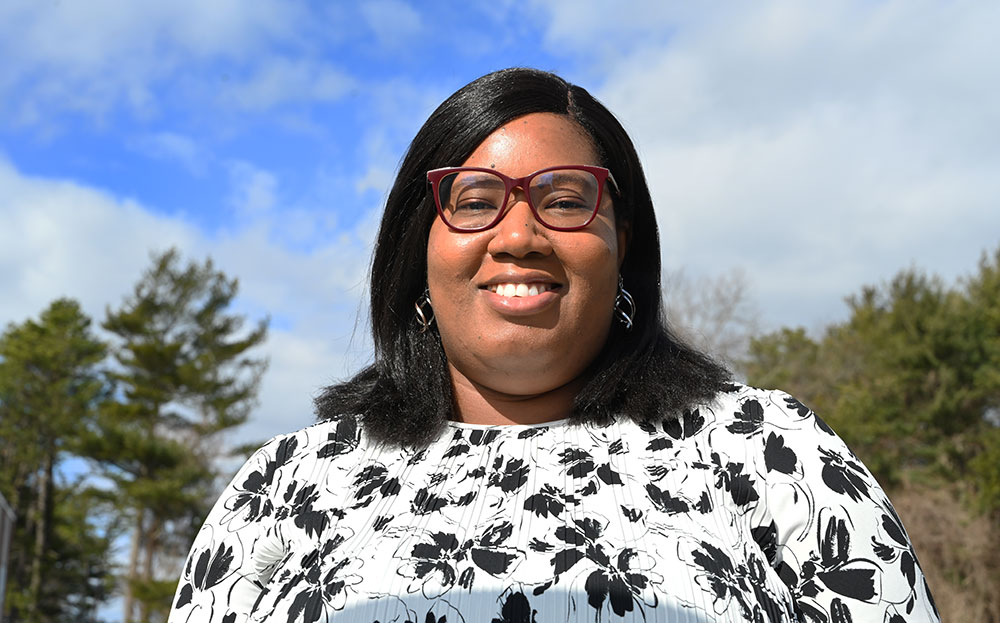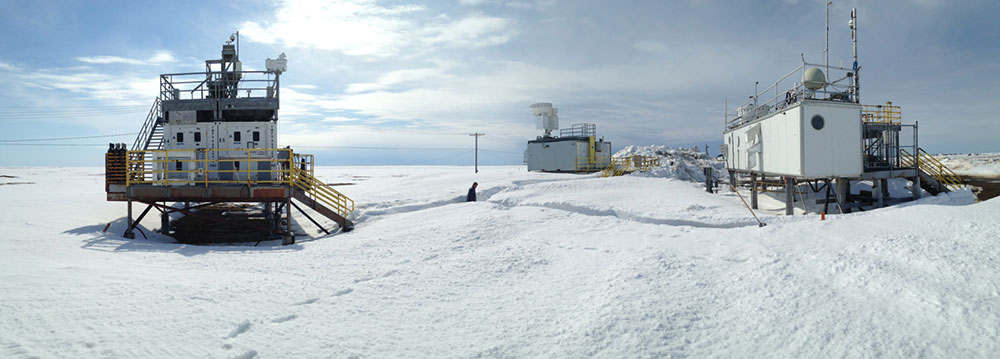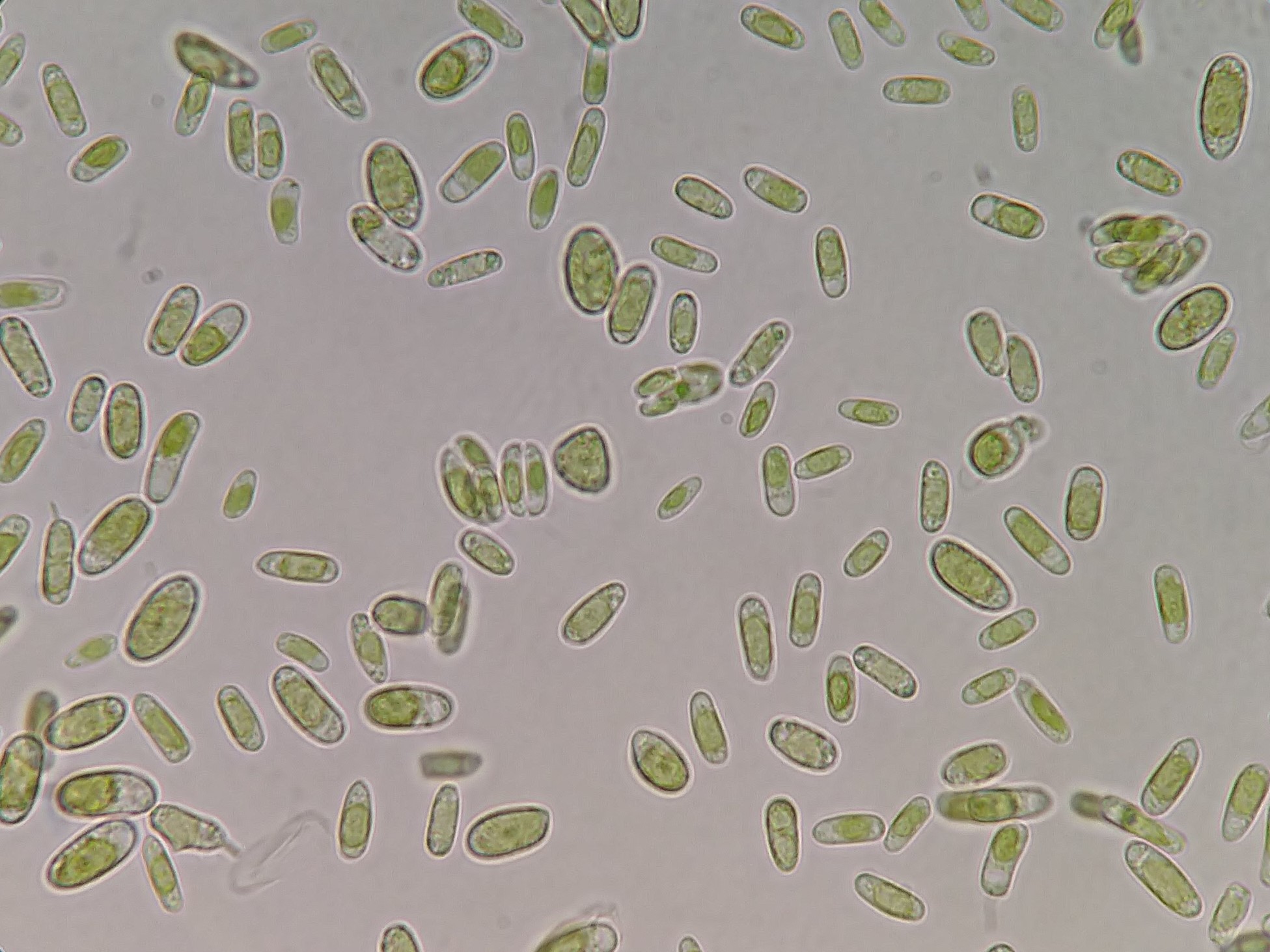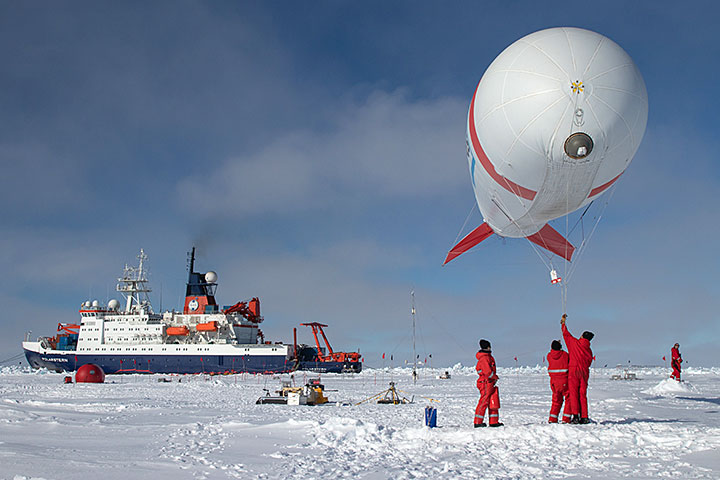Scientists have made the first-ever remote observations of the fine-scale structure at the base of clouds. The results show that the air-cloud interface is a transition zone where aerosol particles suspended in Earth’s atmosphere give rise to the droplets that ultimately form clouds.
Tag: Clouds
Neptune’s Disappearing Clouds Linked to the Solar Cycle
Astronomers have uncovered a link between Neptune’s shifting cloud abundance and the Sun’s 11-year solar cycle that increases the amount of ultraviolet radiation reaching the planet. This discovery is based on three decades of observations by Hubble.
Arctic dust found to be a major source of particles that form ice crystals in Arctic low-level clouds
Researchers have found that dust from land without snow cover in the Arctic is a major source of particles that form ice crystals in low-level clouds of the Arctic (at altitudes below about 3 km) during summer and fall.
New Insights on the Prevalence of Drizzle in Marine Stratocumulus Clouds
Detecting drizzle in its early stages in marine stratocumulus clouds is important for studying how water in clouds becomes rainfall. However, detecting the initial stages of drizzle is challenging for ground-based remote-sensing observations.

Ogo Enekwizu Brings Soot-seeded Clouds into the Laboratory
Tiny particles in Earth’s atmosphere can have a big impact on climate. But understanding exactly how these aerosol particles form cloud drops and affect the absorption and scattering of sunlight is one of the biggest sources of uncertainty in climate models. Ogochukwu (Ogo) Enekwizu is trying to tame that complexity by creating soot-seeded aerosol particles in a lab.
High-Pressure Systems Favor Sea-Breeze Convection Over Southeastern Texas
In the summer, sea- and bay-breeze circulations are important drivers of the weather in southeastern Texas. This research used machine learning techniques to unpack how these circulations interact with larger-scale weather systems to affect how thunderstorms form in the Houston area. These insights are helping researchers focus their study of aerosol and cloud life cycle, aerosol-cloud interactions, and air quality during the TRACER field campaign in the Houston area in 2021 and 2022.
Clouds less climate-sensitive than assumed
In a major field campaign in 2020, Dr. Raphaela Vogel who is now at Universität Hamburg’s Center for Earth System Research and Sustainability (CEN) and an international team from the Laboratoire de Météorologie Dynamique in Paris and the Max Planck Institute for Meteorology in Hamburg analyzed observational data they and others collected in fields of cumulus clouds near the Atlantic island of Barbados.
Physicist strikes gold, solving 50-year lightning mystery
An Australian physicist has solved a 50-year conundrum that has baffled the world’s best science minds – why lightning zigzags.
The lightness of water vapor adds heft to global climate models
Clouds are notoriously hard to pin down, especially in climate science.
Observations show marine clouds amplify global warming
A new analysis of satellite cloud observations finds that global warming causes low-level clouds over the oceans to decrease, leading to further warming. The work, led by researchers at Lawrence Livermore National Laboratory (LLNL), in collaboration with colleagues from Scripps Institution of Oceanography and the NASA Langley Research Center.

Probing Wet Fire Smoke in Clouds: Can Water Intensify the Earth’s Warming?
A first-of-its-kind instrument that samples smoke from megafires and scans humidity will help researchers better understand the scale and long-term impact of fires—specifically how far and high the smoke will travel, when and where it will rain, and whether the wet smoke will warm the climate by absorbing sunlight.

Explosive Origins of ‘Secondary’ Ice—and Snow
Where does snow come from? This may seem like a simple question to ponder as half the planet emerges from a season of watching whimsical flakes fall from the sky–and shoveling them from driveways. But a new study on how water becomes ice in slightly supercooled Arctic clouds may make you rethink the simplicity of the fluffy stuff. It describes definitive, real-world evidence for “freezing fragmentation” of drizzle as a major source of ice in slightly supercooled clouds. The findings have important implications for forecasting weather and climate.

Bacteria and Algae Get Rides in Clouds
Human health and ecosystems could be affected by microbes including cyanobacteria and algae that hitch rides in clouds and enter soil, lakes, oceans and other environments when it rains, according to a Rutgers co-authored study.
Tiny Particles that Seed Clouds Can Form from Trace Gases Over Open Sea
New results from an atmospheric study over the Eastern North Atlantic reveal that tiny aerosol particles that seed the formation of clouds can form out of next to nothingness over the open ocean. Understanding the process will improve how aerosols and clouds are represented in models that describe Earth’s climate.
Cracks in Arctic sea ice turn low clouds on and off
The prevailing view has been that more leads are associated with more low-level clouds during winter. But University of Utah atmospheric scientists noticed something strange in their study of these leads: when lead occurrence was greater, there were fewer, not more clouds.

Scientists Prepare Ship for Mission Locked in Arctic Ice
The German icebreaker RV Polarstern is scheduled to set sail today from Tromsø, Norway, for a 13-month journey to wherever the sea ice takes it. In a week or so, the ship will get locked into the Arctic ice and drift with the ice floes for a year so that scientists can gather unprecedented data about the Arctic climate.